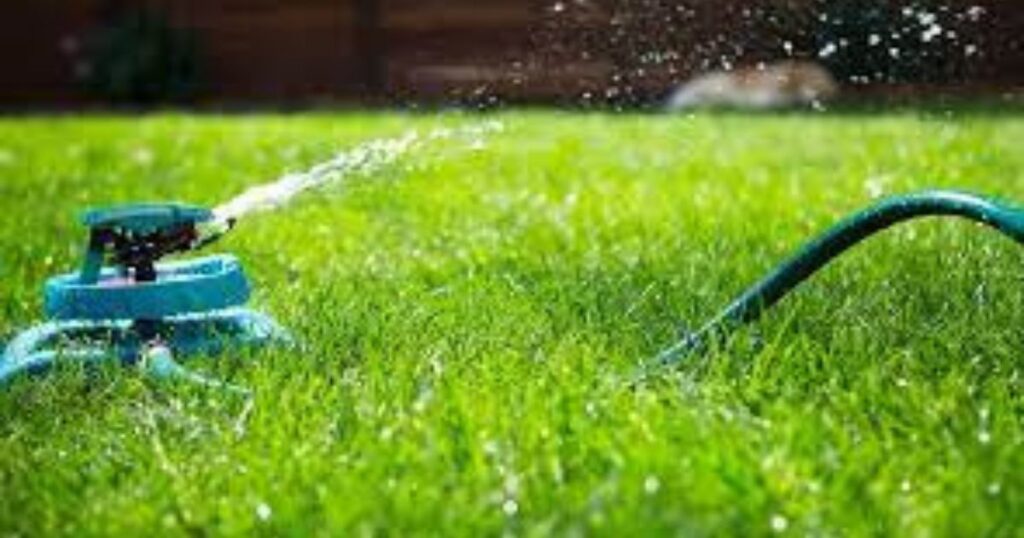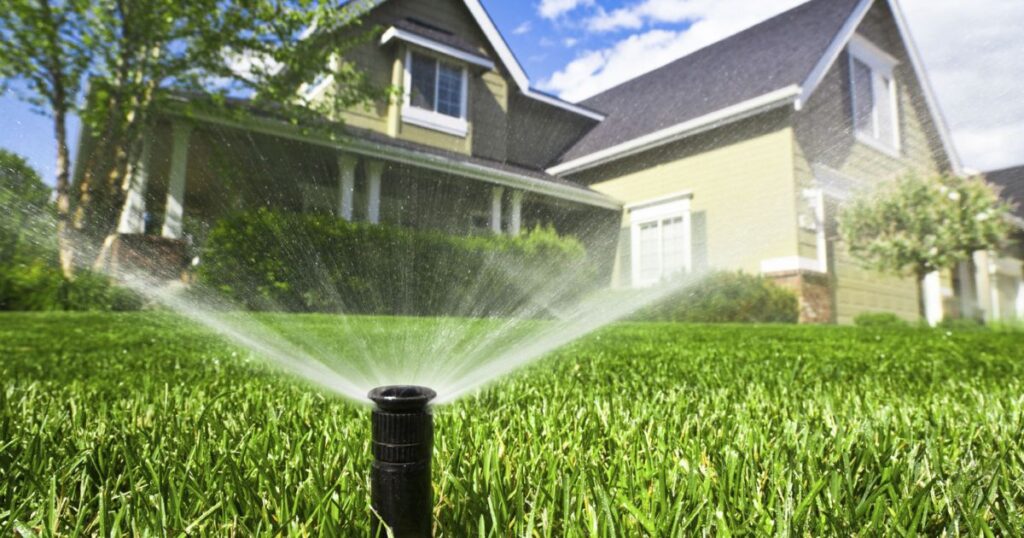While not all plants can withstand excessive amounts of water, they all need it. Watering Lawn is an art form. To maintain both the aesthetic appeal and health of your garden, you should be aware of it. They are able to provide homeowners with accurate guidance on when to begin watering lawn because of this. Separate-home owners may find that their properties don’t need the same level of watering as other garden areas due to different plant demands. The grass is unique because it serves both practical and decorative purposes. In addition, most individuals like watering the grass as a pastime since it gives them mental clarity. However, keep in mind that an excessive or insufficient amount of water might ruin the appearance of the grass and need costly repairs.
After the winter season ends, a lot of homeowners begin watering their lawns. However, it’s crucial to remember that there is often enough rain in the early spring to maintain the health of your grass. In actuality, experts advise that you begin watering your grass as soon as the weather becomes dry. In addition to understanding when to start watering lawn , you should educate yourself on additional watering lawn care techniques.
Consider How Grass Grows
The grass must always be green. The inference is that if natural precipitation isn’t available to assist you, you’ll need to maintain your irrigation system every day after you get going. As such, watering requires commitment, so consider your options before opting to do it. Grass proliferates, so you must mow it, and this will also change the amount of water it needs.Additionally, we anticipate that the grass planting medium will impact the grass’s ability to retain moisture, thus altering the timing for when you should water it.
The Type of Grass in Your Lawn
The variety of grass can influence perspiration rates, the grass’s capacity to retain water, and the lawn covering created by the grass canopy.In addition to understanding when to begin watering your property, you must choose the proper species that can withstand the climate in your location. If not, it will be essential to ensure that the surrounding circumstances are just right for the grass to flourish. If you allow a lot of activities to occur on your lawn, it may seem uneven. Additionally, if there is rapid growth due to excessive watering lawn, it may become bushy.
Pay Attention to the Soil Temperatures

After a few months of cold weather, the warmth of the soil will cause the grass to begin growing. Understanding this will assist you in deciding when to start watering your yard. Mainly, if your lawn includes bluegrass, it stimulates the grass to start growing as the temperature climbs to roughly 40 degrees. To determine when to begin watering your grass, you may depend on the behavior of the soil temperature. To choose when to start watering, you may also use the temperature values for each month. In this scenario, April is when you may begin watering.
Mowing Consistency Affects the Right Month to Water
The optimal time to begin watering your grass might also be impacted by mowing. You will need to start watering considerably earlier in the year if you are moving a lot, which means you are mowing the grass when it is still short and your location does not have winter months. In February, make sure to have your irrigation systems (pumps and watering cans) ready for use when you apply the fertilizer.Unlike the typical April watering, which calls for a lot of water to encourage grass renewal, your irrigation will be light.
When should I start watering?
A number of our customers inquire with us about when their automated irrigation should start when the Long Island temps begin to rise. Depending on the style of landscape, trees, bushes, lawn, and even the species of grass on a property, varied watering needs may apply. The type of soil has a significant role; clay soils store more water than sandy soils, necessitating more frequent watering. Properties close to the lake are often colder than those a few miles inland, so it’s essential to take microclimates into account.
I have the following suggestions for watering in April, May, and June:
Until Memorial Day, most properties don’t need to be automatically irrigated on a regular basis.
For longer than three days, if the temperature continually rises over 70 degrees, start watering automatically or manually run one cycle.
When the temperature drops to the 60s or below, you may manually water once or twice a week.
As per your water district regulations, automated watering starts every other day when the temperature rises over 80 degrees. The number of dwellings should be even on even days and odd on odd days.
We get above-average rainfall every spring, so please make sure your controller’s rain sensor is in the “active position.”
Press the right-facing “arrow” on the Hunter Pro-C controller to start watering either manually or semi-automatically if you want to create and don’t think it’s essential to water automatically.
We can put a tiny weather station on most systems thanks to really inventive technology that allows us to automatically modify your watering run times and prevent your system from going on when it’s too chilly outside. Hunter produces a gadget known as a “Solar Sync,” while Toro creates the Evolution Series. By clicking here, you can also see our recently launched web-based intelligent controller.
Water is becoming more and more expensive and is soon turning into a valuable resource. We must each do our share of conservation when it is called for. It’s okay to forgo giving the correct quantity of water at the right time in order to practice water conservation.
Water Wise: When to Start Watering, Fertilizing and Mowing?

The allure of longer, warmer days in the spring is to water and fertilize the grass. However, an educator from the University of Nebraska–Lincoln Extension advises you to pause and reflect before moving further.
Jim Schild, an Extension Educator at the Scottsbluff Extension office, said that “once the grass gets green and growing, you’re going to have to keep it green and growing, which means you’ll have to continue watering it and mowing it.”
According to Schild, bluegrass naturally has a growth spurt in the spring. Fertilizer application causes the root system to suffer as it promotes more incredible above-ground growth and that natural flush. Bluegrass needs energy, which is stored in the roots, to start growing above ground. Schild said that the grass’s total root system is reduced by increasing greenery.
Schild suggests that lawns that received autumn fertilization don’t need substantial fertilizer in the spring. Additionally, it is only necessary to fertilize for the first time in late April or early May. Usually, a small amount of fertilizer combined with a crabgrass preventer is used.
According to Schild, bluegrass will begin to develop when the right circumstances are present, which include soil temperatures in the mid-40s. By early April, soil temperatures often approach that level.
It’s then time to consider water.
“Bluegrass will begin to turn green, and we need to make sure there’s enough moisture for it to do so,” he said. Try driving a flat-head screwdriver’s shaft into the ground to measure the moisture content of the soil. There is sufficient moisture in the soil if the screwdriver can penetrate to a depth of six inches.
According to Schild, it might be alluring to cut lawns short in the spring. “It’s acceptable for the initial cutting to remove the old, dead grass; however, for the remainder of the season, mow at a height of 3 to 3 ¼ inches,” he said.
According to Schild, research indicates that the more profound the rooting depth, the higher the grass that is mowed. Thus, less rooting depth results from reduced mowing heights. The grass blades may topple over and fall if the grass is left longer than 3 ½ inches.
Schild continued, saying that it’s crucial to start the mower season with a sharp blade and to hone it many times throughout. In addition to increasing water use, a dull knife may give the grass a gray hue.
The one-third rule states that you should never mow more than one-third of a grass blade at a time.
Since the grass blade is 90% moisture, each time we mow, we’re losing a little bit more moisture, according to Schild.
Together, the Nebraska Forest Service, the Cities of Gering, Scottsbluff, and Terrytown, the University of Nebraska Panhandle Research and Extension Center, and the Nebraska Forest Service are disseminating information on water conservation and the advantages of reasonable use.
Check Also:
